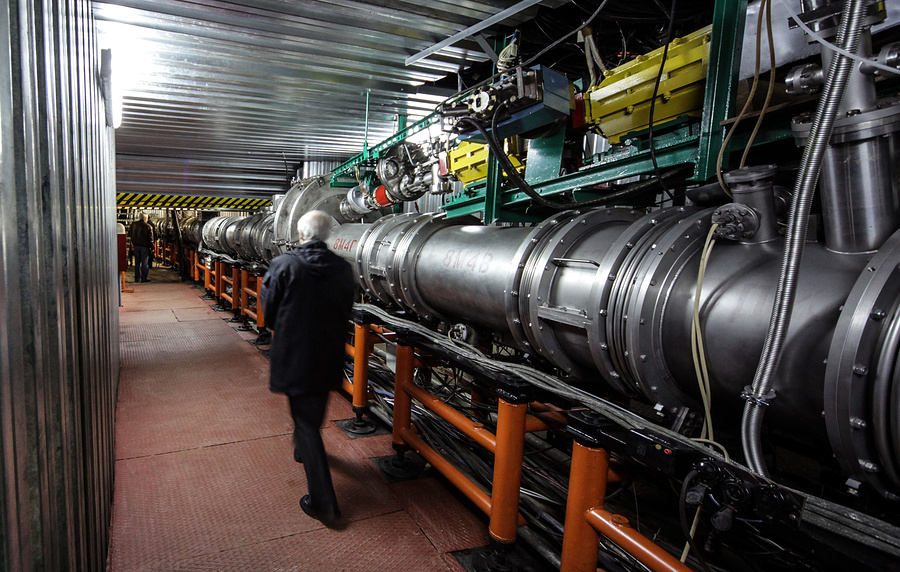Basic element of the MPD detector was delivered to Dubna
News, 31 July 2019
The key element of the multi-ton magnet was delivered to the Joint Institute for Nuclear Research (JINR, Dubna). The element is the basis of the multipurpose detector MPD being constructed in the frames of the mega-science project NICA. It was reported on by Deputy-Director of the Laboratory of High Energy Physics JINR Yuri Potrebenikov to TASS on Tuesday.
 Photo © Marina Lystseva / TASS
Photo © Marina Lystseva / TASS
The mega-science project NICA (Nuclotron-based Ion Collider facility) includes the JINR-based construction of the research complex of superconducting rings at colliding heavy ion, proton and deuteron beams. The complex will consist of the modernized complex and the Nuclotron accelerator, the intermediate accelerator (Booster), and the collider.
“We got the basic element for the MPD detector from the Czech Republic at which the transition state of the matter will be studied. It includes the yoke and end caps for the large superconducting solenoid magnet, which completes the magnetic field. It is vital for the construction of the large multipurpose detector that will be placed at the first colliding point in the NICA collider. The assembling will be launched after we obtain the “cold” part of the magnet that is now being produced in Italy,” Yu. Potrebenikov said.
39 trucks transported all the elements of the yoke and beds from the Czech Republic to Russia
The yoke of the magnet consisting of 28 bars, supporting end rings and two pole tips weighs about 700 tons and will be assembled at special beds that have been also delivered to Dubna. 39 trucks transported all the elements of the yoke and beds from the Czech Republic to Russia. The “cold” part includes the superconducting element of the magnet. When this part will be delivered, JINR specialists will be able to finish the assembling of the magnet and launch the next stage of the detector erection.
“When we will get this delivery, we will be able to install the solenoid magnet, fully close it with bars of the yoke and start the inside assembling of detectors. The erection is supposed to last until 2020. We hope to get the operating facility in its basic configuration until then, and experiments at the MPD detector will be launched in 2022, a year after the launch of the collider,” the JINR representative noted.
Source: newsportal «Future of Russia. National projects»